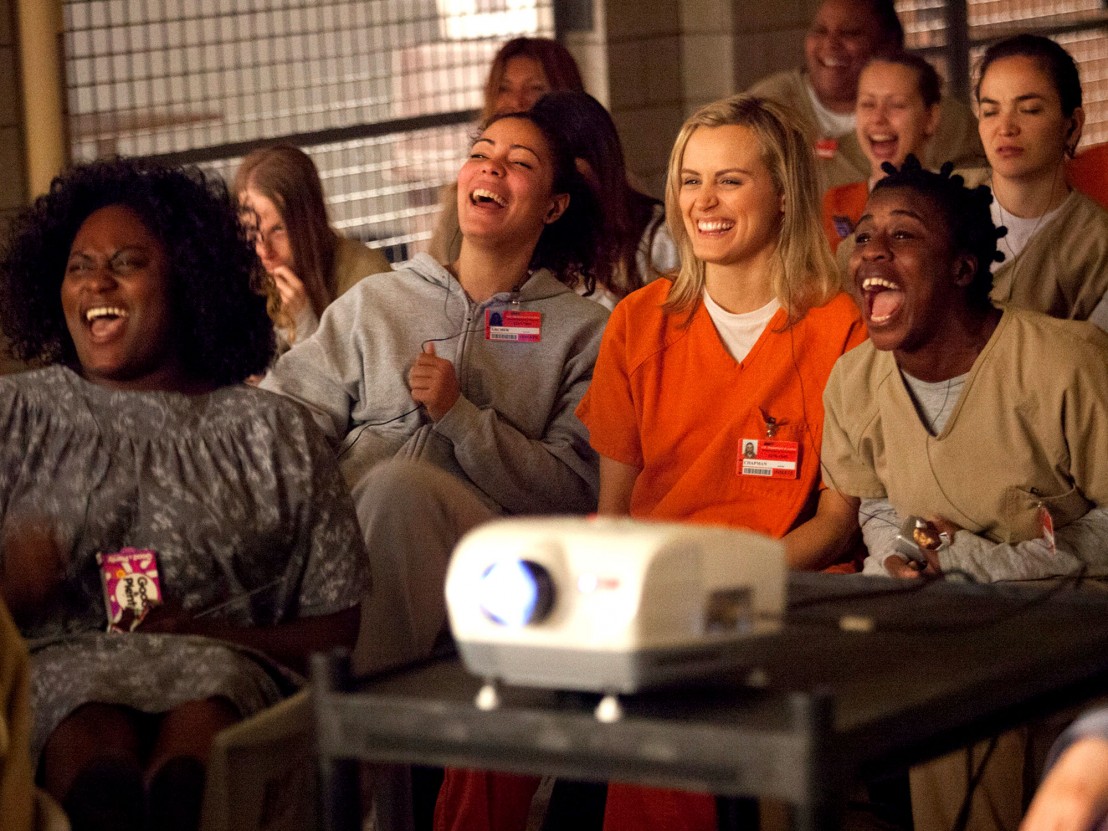
The release of the latest season of Orange is the New Black on Netflix provides a timely reminder that now more than ever we are an audience of bingers. All 13 episodes were available instantaneously enabling fans of the show to gorge on the entire season in one go. Something has fundamentally changed in our viewing habits, but could the way we consume visual media – whether it’s film or TV – pose a threat to that oldest of institutions, the bricks-and-mortar cinema?
TV has always dominated the everyday cultural conversation far more than films. Back when scheduled viewing was the only way to watch your favourite show it was a communal event. Anyone who watched the latest episode did so at the same time as everyone else, and water coolers everywhere became the site for a uniquely modern ritual. That changed with the advent of VOD services, which made it easier to catch up with popular programmes, but with the growing demand for instant availability the tide is changing once again. Now we are faced with the need to binge-watch entire series within days or risk missing out on the conversation. And when the mainstream conversation is increasingly about bingeable series, cinema becomes an secondary concern.
The average tentpole blockbuster, with huge amounts of marketing spend behind it, will be fine; it’s the mid-budget films, which already struggle for attention, that will be squeezed out. Yet while the outlook may seem bleak for cinema, the cold, hard stats suggest otherwise. In numbers, if nothing else, cinemas are just as strong as ever, with UK admissions remaining around the £160 million per year mark throughout the last decade. Attendance actually increased by £14.5 million between 2014 and 2015 – the sharpest climb on record.
It seems that a rising tide lifts all boats. Netflix and Amazon Prime and the binge-watching culture they’ve ushered in aren’t necessarily stealing punters away from cinemas, but instead making us all more voracious consumers. So the question becomes, why aren’t we full up yet?
One possible reason is that the film industry has adopted the serialised format of TV and streaming services. Marvel’s Cinematic Universe and the Fast and Furious series – to pick out just a few high-profile franchises – now more closely resemble a collection of extended episodes than a bunch of individual films. They’ve taken what we love most about long-form television – the close viewer bond with characters, the space for steady development – but kept the bad as well. No one ever really dies, and nothing ever really changes. Too much evolution, even over the slow-burn of five or six films, kills the cash cow.
We’re also starting to see an evolution in the way films are being distributed. Traditional theatrical distribution – fuelled by months if not years of hype marketing – looks outdated when compared with how the music industry now operates, for example. A few years further down the line in its digital revolution, many of the biggest artists in the world now release their work with only a few days’ notice for fans. Just look at Beyoncé’s ‘Lemonade’ or Radiohead’s ‘A Moon Shaped Pool’; with so much content out there a sharp shock of a release could soon be the surest way to get people’s attention.
The VOD industry is heavily reliant on binge watching. Netflix and Amazon may forewarn viewers of when their shows will be available, but they still rely on the sheer weight of 10 or 15 episodes dropping all at once to cut through the noise in the crowded entertainment sector. It’s hard to imagine the latest season of House of Cards or Daredevil having such an impact if they had been drip-fed over the course of several months.
Anything that’s not hitched to an existing franchise juggernaut may soon have to adopt a similarly inventive approach to succeed at the cinema. The publicity machine for those productions is still, by necessity, a slow-moving factory line of teaser trailers, promotional materials and syndicated interviews, but there is an opportunity for other types of film. Take 10 Cloverfield Lane, technically a franchise film, but really just an intelligent mid-budget thriller that sent shockwaves through the industry earlier this year with its surprise release. If we’d known about its existence six months earlier, do you think anyone would have cared as much by the time it arrived in cinemas?
Films have to work harder than ever to win audiences’ attention and they’re becoming more like TV series in a bid to ape their success. But with viewers not demanding quantity and quality it’s harder than ever for modest but worthwhile films to find an audience. If the numbers are anything to go by, binge culture isn’t going to kill cinema any time soon, but the change has already begun.
Published 21 Jun 2016

Modern blockbusters are made by a committee of millions. What happened to turning up and taking your chances?

By Tom Bond
It’s become increasingly rare for films like Batman V Supeman: Dawn of Justice to live up to expectations.

The gap between movies and video games is closing. But what will happen when the viewer has control over the script?